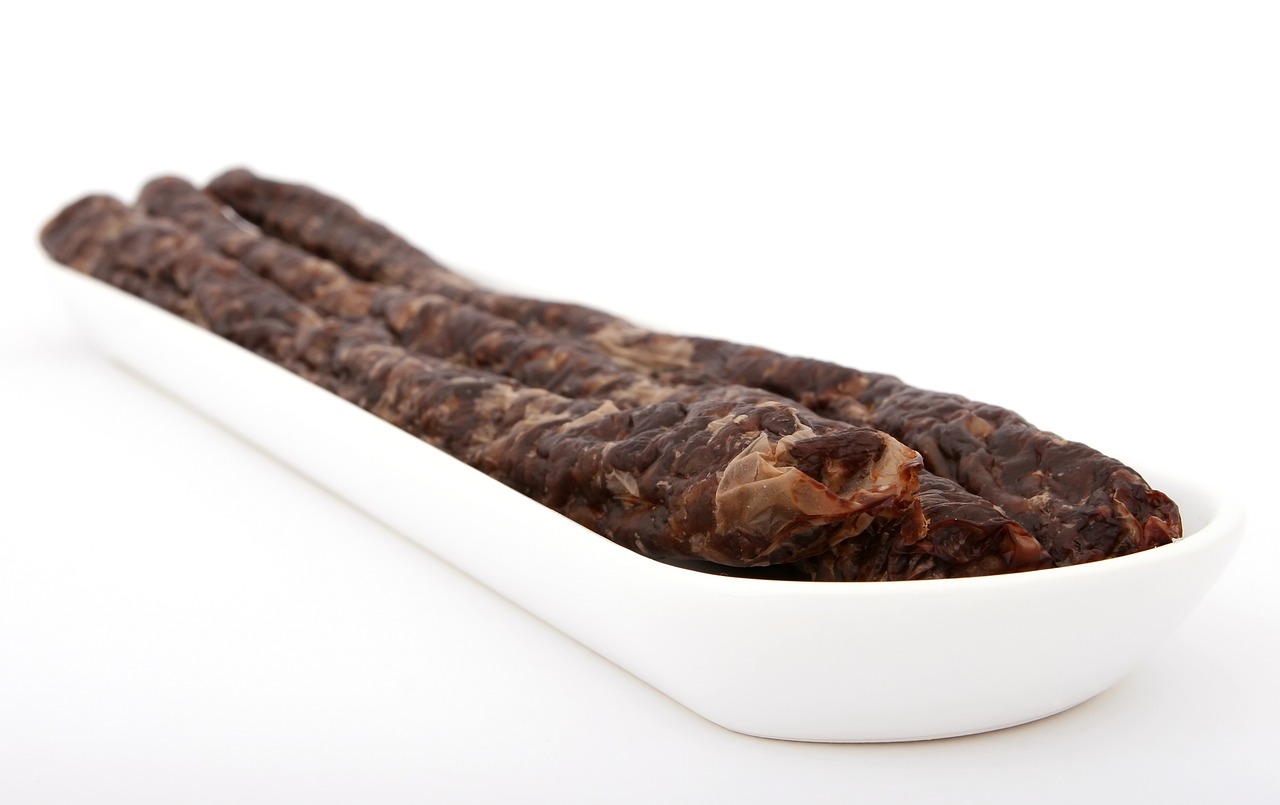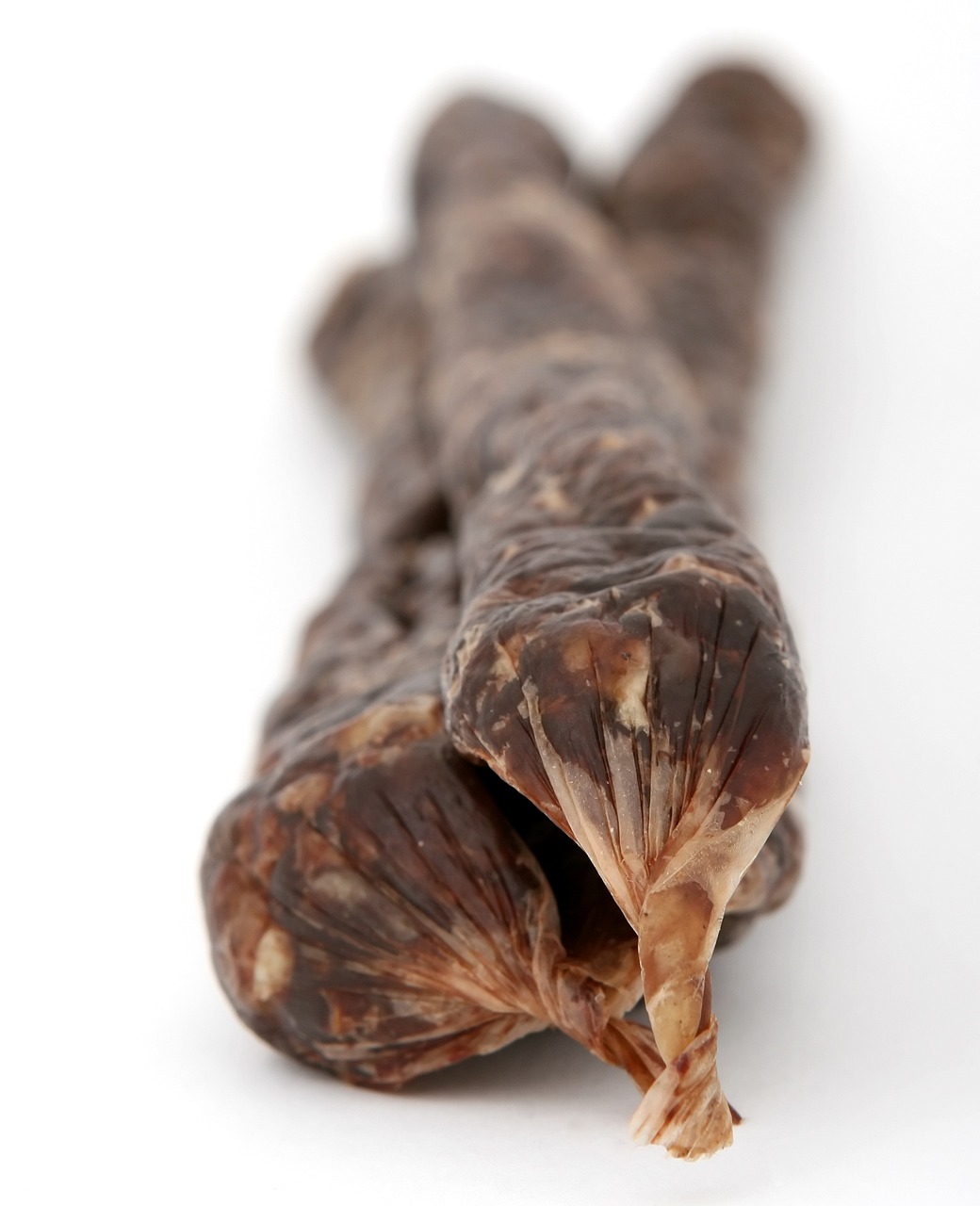Preserved meats can be your life-saving asset when it comes to your survival kit. Packed with essential nutrients and long shelf life, they provide a valuable protein source that can sustain you in times of emergencies or outdoor adventures. From beef jerky to canned tuna, preserved meats are not only convenient but also offer a savory and satisfying option to keep you going when fresh food is scarce. So, stock up on these protein powerhouses and be prepared for any unforeseen circumstances that may come your way.

Importance of Protein in a Survival Kit
Protein as an Essential Macronutrient
When it comes to survival situations, having a well-balanced and nutrient-rich diet is crucial. One essential macronutrient that should never be overlooked is protein. Protein plays a vital role in supporting various bodily functions, and without an adequate intake, your body may not be able to perform at its best. Protein is essential for muscle repair and growth, maintaining energy levels, and ensuring overall health and well-being.
Protein’s Role in Muscle Repair and Growth
In a survival situation, your body may experience physical exertion and stress, leading to muscle wear and tear. Protein plays a key role in the repair and growth of muscles. It provides the necessary building blocks to repair damaged muscle tissues and promotes the development of new muscle fibers. By including protein in your survival kit, you are ensuring that your muscles have the necessary resources to recover and stay strong.
Protein’s Contribution to Energy Levels
Protein also serves as a vital source of energy, especially when other macronutrients may be limited. While carbohydrates and fats are commonly associated with energy production, protein can also be used as fuel when needed. This is particularly important in survival situations where food may be scarce. By including protein in your survival kit, you are providing your body with the energy it needs to sustain physical activity and mental alertness.
Advantages of Including Preserved Meats in Your Survival Kit
Long Shelf Life
One of the key advantages of including preserved meats in your survival kit is their long shelf life. Preserved meats, such as canned meats, dried meats, jerky, and smoked meats, have undergone various preservation techniques that extend their expiration dates significantly. This means that you can store these meats for an extended period without worrying about spoilage or the need for refrigeration. In a survival situation where access to fresh food is limited, having preserved meats that can last for months or even years can be a game-changer.
Convenient and Portable
Preserved meats are designed to be convenient and portable, making them an ideal addition to any survival kit. Whether you’re on the move, setting up camp, or exploring new territories, having protein-rich foods that are easy to carry and require minimal preparation is invaluable. Preserved meats come in compact packaging and can be eaten straight out of the can or bag. This convenience allows you to quickly satisfy your hunger and obtain essential nutrients while conserving energy and resources.
High Nutritional Value
Preserved meats pack a punch when it comes to nutritional value. They are rich in protein, providing the necessary amino acids required for optimal bodily functions. Additionally, preserved meats often retain other essential nutrients such as vitamins and minerals, which are vital for maintaining good health. By including preserved meats in your survival kit, you are ensuring that you have access to a nutrient-dense food source that can help sustain your body and support your well-being in times of need.
Low Risk of Contamination
Preserved meats undergo specific preservation methods that not only extend their shelf life but also minimize the risk of contamination. These methods, such as canning, drying, and smoking, help to eliminate or inhibit the growth of harmful bacteria and microorganisms that can cause foodborne illnesses. In a survival situation where access to clean water and proper cooking facilities may be limited, having preserved meats that are less susceptible to contamination provides an added layer of safety and peace of mind.
Types of Preserved Meats Suitable for Survival Kits
Canned Meats
Canned meats are a staple in many survival kits for a good reason. They are highly durable, have a long shelf life, and retain their nutritional value even after extended periods of storage. Canned meats typically come in a variety of options, including chicken, beef, pork, and fish. They are fully cooked and ready to eat, allowing for quick and easy consumption in emergency situations.
Dried Meats
Drying is one of the oldest methods of preserving meats, and it remains an excellent option for survival kits. Dried meats, such as beef or turkey jerky, have a significantly reduced moisture content, which inhibits bacterial growth and extends their shelf life. They are lightweight, portable, and provide an excellent source of protein. Dried meats can be eaten as a standalone snack or rehydrated to use in various recipes.
Jerky
Jerky is a form of dried meat that has been seasoned and marinated for added flavor. It is typically made from lean cuts of beef, but other meats such as turkey, chicken, and venison can also be used. Jerky is known for its long shelf life and high protein content, making it an ideal choice for survival kits. Its chewy texture and intense flavor make it a satisfying and enjoyable snack during challenging times.
Smoked Meats
Smoking is a preservation technique that not only enhances the flavor of meats but also extends their shelf life. Smoked meats, such as smoked sausages or bacon, have a distinct smoky aroma and taste that can boost morale in survival situations. They are often fully cooked and ready to eat, providing a quick and convenient protein source. Smoked meats can be consumed on their own or incorporated into a variety of dishes.
Considerations when Buying Preserved Meats for Your Survival Kit
Expiration Date and Shelf Life
When purchasing preserved meats for your survival kit, it’s essential to pay attention to the expiration date and shelf life. Different preservation methods and packaging can affect the longevity of the meats. Look for products that have a long shelf life, preferably several months to a few years. This ensures that the meats will remain safe to consume and retain their nutritional value throughout your survival journey.
Sodium Content
Preserved meats, especially canned and smoked varieties, may have a higher sodium content due to the preservation process. While sodium is essential for survival, excessive consumption can lead to health concerns, such as high blood pressure. When choosing preserved meats, opt for low-sodium or reduced-sodium options whenever possible. This allows you to maintain a balanced diet and minimize potential health risks associated with excessive sodium intake.
Ingredients and Additives
Take the time to read the ingredient list of the preserved meats you plan to purchase. Look for products that have minimal additives, preservatives, and artificial ingredients. Pay attention to any potential allergens or ingredients that may cause adverse reactions. Choosing preserved meats with simple and natural ingredients ensures that you are consuming a wholesome product that aligns with your dietary preferences and needs.
Nutritional Information
Before adding preserved meats to your survival kit, familiarize yourself with their nutritional information. Pay attention to the protein content, as well as other essential nutrients such as vitamins and minerals. Remember that in a survival situation, maintaining a well-rounded diet is crucial for overall health. By selecting preserved meats with a diverse nutritional profile, you can ensure that your body receives the necessary nutrients to stay strong and resilient.

Storage and Maintenance of Preserved Meats in Your Survival Kit
Proper Temperature and Environment
When it comes to storing preserved meats in your survival kit, it’s important to consider temperature and environmental factors. Most preserved meats require cool and dry conditions to maintain their quality and longevity. Ensure that your survival kit is stored in a cool and dry place, away from direct sunlight, moisture, and extreme temperatures. Avoid exposing the meats to fluctuating temperatures, as this can accelerate spoilage and compromise their safety.
Protection against Pests
Pests, such as rodents and insects, can pose a threat to the integrity of your preserved meats. To prevent infestation, take necessary precautions to protect your survival kit from pests. Use sturdy containers or sealable bags to store the preserved meats, ensuring that there are no openings or gaps. Consider using additional protective measures, such as storing the meats in airtight containers or adding repellant substances to deter pests.
Regular Inspection and Rotation
Regular inspection and rotation of the preserved meats in your survival kit are essential to ensure their quality and safety. Check the expiration dates regularly and discard any products that have passed their recommended use-by date. Additionally, inspect the packaging for signs of damage or compromise. Consider implementing a rotation system, where you consume and replace the oldest preserved meats first, ensuring that your supply remains fresh and reliable.
Alternative Protein Sources for Your Survival Kit
Canned Fish
While preserved meats are an excellent protein source, consider diversifying your survival kit with canned fish. Canned tuna, salmon, and sardines are packed with protein, omega-3 fatty acids, and various other nutrients. They provide a lightweight and versatile protein option that can be eaten on its own or used in various recipes. Canned fish also has a long shelf life, making it a reliable protein source for long-term survival.
Nuts and Seeds
Nuts and seeds are nutrient-dense sources of plant-based protein that can complement preserved meats in your survival kit. Almonds, walnuts, chia seeds, and flaxseeds are just a few examples of protein-rich nuts and seeds. They provide essential fatty acids, fiber, and various vitamins and minerals. Nuts and seeds are also lightweight, portable, and require minimal storage and preparation.
Dried Beans and Lentils
Dried beans and lentils are versatile protein sources that can provide sustenance in survival situations. They are high in protein, fiber, and complex carbohydrates, offering a well-rounded nutritional profile. Dried beans and lentils can be stored for long periods, are lightweight, and can be cooked with minimal resources. Whether used in soups, stews, or even sprouted for added nutrition, dried beans and lentils are an excellent addition to any survival kit.

Recipes and Meal Ideas with Preserved Meats in Survival Situations
Preserved Meat Sandwiches
Preserved meats can be the star ingredient in simple yet filling sandwiches. Combine your choice of preserved meat, such as canned chicken or beef, with bread, spreads, and toppings of your choice. Experiment with different flavors by adding condiments, vegetables, and herbs to create a satisfying meal on the go.
One-Pot Survival Stews
In a survival situation, a hearty and nourishing stew can provide comfort and sustenance. Combine preserved meats, dried beans, vegetables, and seasonings in a pot, and let them simmer over a portable stove or fire. This one-pot meal ensures a balanced and flavorful dish that can be shared with others or saved for multiple meals.
Meat and Vegetable Wraps
For a quick and nutritious meal, use preserved meats as filling for wraps. Lay out a tortilla or flatbread and layer it with preserved meat, vegetables, and sauces. Roll it up tightly and enjoy a filling and portable meal that can be eaten on the go. Get creative with your choice of ingredients to add variety and flavor to your wraps.
Preserved Meats: A Balance of Nutrition and Taste
Ensuring Adequate Protein Consumption
When relying on preserved meats as a protein source, it’s important to ensure that you consume an adequate amount to meet your body’s needs. Protein requirements can vary depending on factors such as age, gender, and activity level. Consult with a healthcare professional or nutritionist to determine your specific protein needs and make adjustments accordingly. By incorporating a variety of preserved meats into your diet, you can ensure a well-rounded protein intake.
Flavor Enhancements for Variety
While preserved meats provide essential nutrition, they may lack the variety of flavors found in fresh foods. To prevent flavor fatigue, consider enhancing the taste of your preserved meats with herbs, spices, and other seasonings. Experiment with different combinations to add variety and make your meals more enjoyable. Additionally, pairing preserved meats with other food items, such as dried fruits or sauces, can further enhance the overall taste and experience.
Potential Risks and Limitations of Reliance on Preserved Meats
Sodium and Health Concerns
One potential risk of relying heavily on preserved meats is the sodium content. While sodium is necessary for certain bodily functions, excessive consumption can lead to health concerns such as high blood pressure and increased risk of cardiovascular diseases. It’s important to be mindful of your sodium intake and seek low-sodium or reduced-sodium options when available. Complementing preserved meats with other protein sources that have lower sodium content can help mitigate the risks associated with excessive sodium consumption.
Lack of Fresh Ingredients
While preserved meats are an excellent source of protein and can sustain you in survival situations, they do not provide the same variety and nutritional benefits as fresh ingredients. Fresh fruits and vegetables, for example, are rich in vitamins, minerals, and antioxidants that are essential for optimal health. It’s crucial to plan and prepare a well-rounded diet that includes preserved meats as well as other nutrient-dense foods, whenever possible.
Dependence on External Preservation Methods
Preserved meats rely on specific preservation methods, such as canning, drying, and smoking, to maintain their quality and safety. In survival situations where access to external preservation methods may be limited, relying solely on preserved meats may not be sustainable in the long term. It’s important to consider alternative protein sources and food preservation techniques that do not require external resources. This ensures that you can continue to meet your protein needs even in the absence of preserved meats.
Conclusion
Preserved meats are undoubtedly an important component of any survival kit. They provide a valuable source of protein, ensuring that you have the necessary nutrients to sustain your body and promote overall health in challenging situations. Their long shelf life, convenience, and high nutritional value make them an ideal choice for any survival kit. However, it’s essential to consider the potential risks and limitations of relying solely on preserved meats. By diversifying protein sources and considering alternative preservation methods, you can ensure a well-rounded and sustainable approach to long-term survival. Remember, a balanced diet and careful consideration of your nutritional needs are key to thriving in survival situations.






